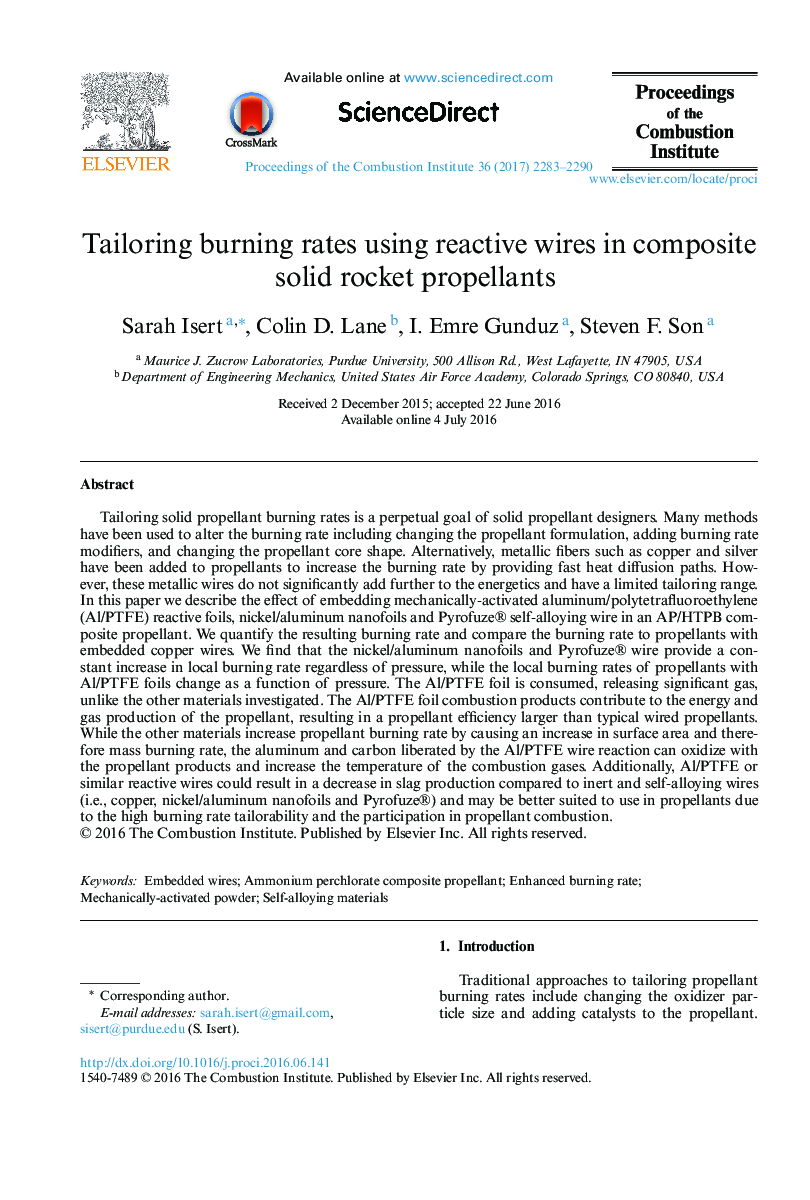| کد مقاله | کد نشریه | سال انتشار | مقاله انگلیسی | نسخه تمام متن |
|---|---|---|---|---|
| 6478310 | 1427916 | 2017 | 8 صفحه PDF | دانلود رایگان |
Tailoring solid propellant burning rates is a perpetual goal of solid propellant designers. Many methods have been used to alter the burning rate including changing the propellant formulation, adding burning rate modifiers, and changing the propellant core shape. Alternatively, metallic fibers such as copper and silver have been added to propellants to increase the burning rate by providing fast heat diffusion paths. However, these metallic wires do not significantly add further to the energetics and have a limited tailoring range. In this paper we describe the effect of embedding mechanically-activated aluminum/polytetrafluoroethylene (Al/PTFE) reactive foils, nickel/aluminum nanofoils and Pyrofuze® self-alloying wire in an AP/HTPB composite propellant. We quantify the resulting burning rate and compare the burning rate to propellants with embedded copper wires. We find that the nickel/aluminum nanofoils and Pyrofuze® wire provide a constant increase in local burning rate regardless of pressure, while the local burning rates of propellants with Al/PTFE foils change as a function of pressure. The Al/PTFE foil is consumed, releasing significant gas, unlike the other materials investigated. The Al/PTFE foil combustion products contribute to the energy and gas production of the propellant, resulting in a propellant efficiency larger than typical wired propellants. While the other materials increase propellant burning rate by causing an increase in surface area and therefore mass burning rate, the aluminum and carbon liberated by the Al/PTFE wire reaction can oxidize with the propellant products and increase the temperature of the combustion gases. Additionally, Al/PTFE or similar reactive wires could result in a decrease in slag production compared to inert and self-alloying wires (i.e., copper, nickel/aluminum nanofoils and Pyrofuze®) and may be better suited to use in propellants due to the high burning rate tailorability and the participation in propellant combustion.
Journal: Proceedings of the Combustion Institute - Volume 36, Issue 2, 2017, Pages 2283-2290
